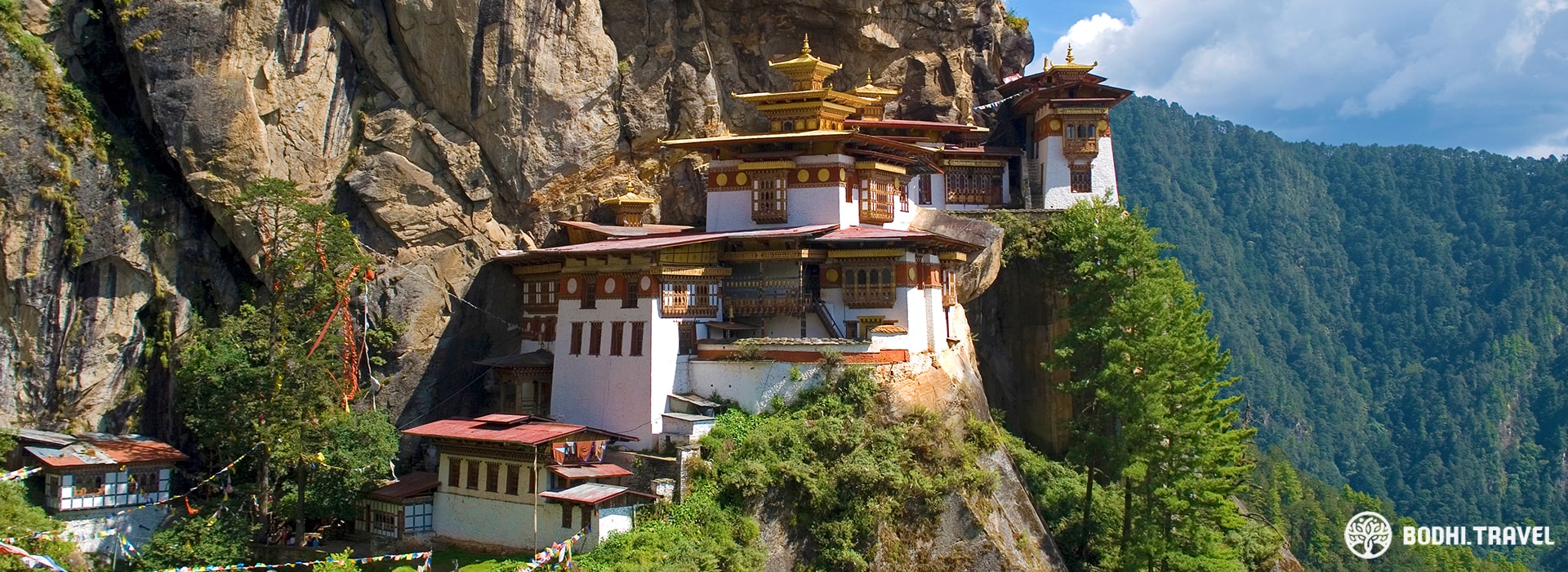
Entering Druk Yul
PK - Posted on June 28, 2019 - 2,760 Views
One major perk of my career in the tourism industry is that I get to travel to many beautiful places to work. In early 2018, I found myself in Bhutan to learn more about the place. My trip was sponsored by Druk Asia and I went on the 7 Day Essential Bhutan Travel Plan.
It was late winter when I arrived in Bhutan and the weather was cold. Despite having traveled to many places, there was a palpable sense of excitement in me. After all, I was finally going to be in that legendary place where gross national happiness was coined.
My guide and driver were very pleasant and friendly. They immediately put me at ease after picking me up from the airport. For this trip, it was luxurious for me as I did not have to share my car, guide and driver with anyone else – Druk Asia offers only private tours.
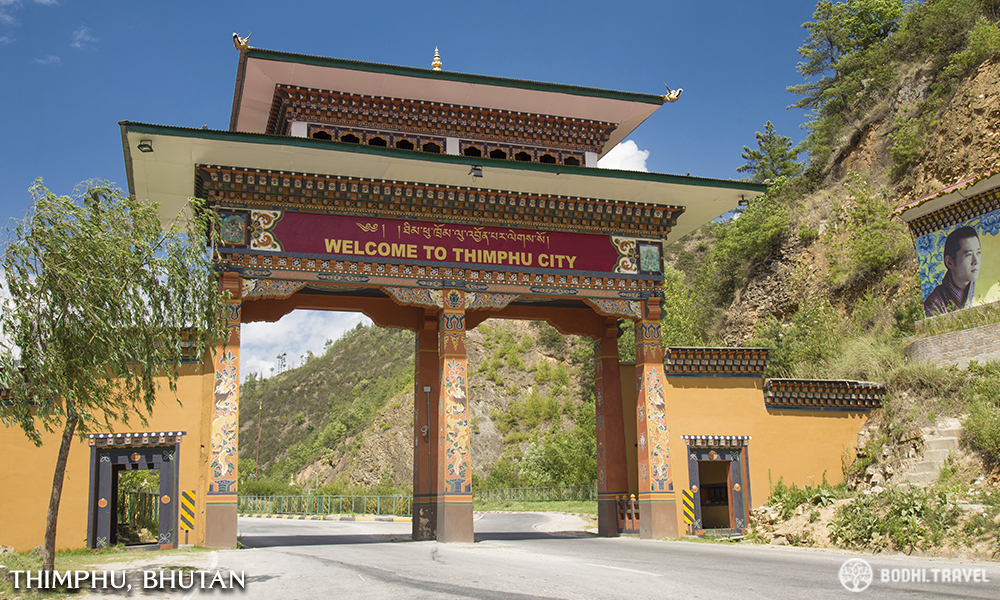
The first journey was a scenic drive from Paro to Thimphu – the capital. It was a very pleasant drive along a river and valley – the drive got me into a mood to relax almost immediately.
One thing about Bhutan that stuck with me was that the urbanisation was well controlled and managed. There were many buildings and structures but there was also a certain sense of cohesion in terms of looks. Many locals were dressed in traditional costumes and that added to the charm of the place.
Thimphu is nonetheless an urban location and at Thimphu (and Paro), I was able to see how modernity has influenced the country with all the trappings of modernity – internet access, cars, mobile phones and other conspicuous signs of consumption.
I did the usual tourist jaunt and visited the museums, post office and art galleries. The highlight of Thimphu was definitely Tashichhoedzong Dzong. The Dzong is a fortress-like structure which served as residential, administrative and religious centre in past Bhutan. Today some are still used for the same purposes and many are kept in good condition by the Bhutanese government. The Tashichhoedzong Dzong was the first Dzong I ever visited and its scale was inspiring.
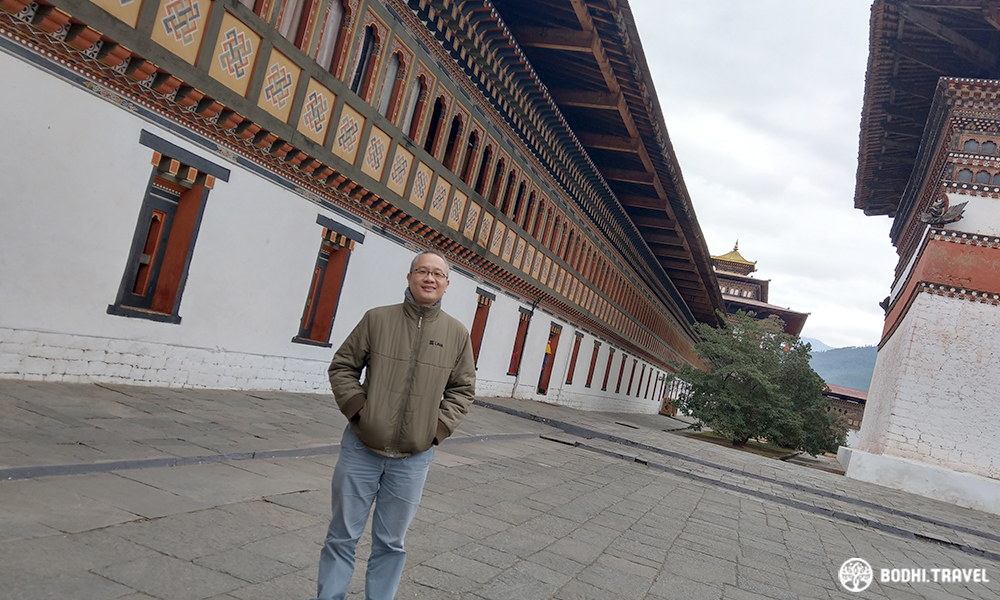
One interesting thing I observed during my entire tour was that my guide would be putting on her uniform whenever we approached a Dzong or a Buddhist monastery. It was part of their local customs and I found that it was a decent mark of respect for important sights.
Through my dialogue with my guide, I understood that the country had been trying to reinforce Buddhist values in their social policies. Besides the overt support for many Buddhist temples and monasteries, butchery was also banned in the country with all meat being imported. Cinemas in Bhutan were allowed to screen only Bhutanese films and these films were heavy with Buddhist influence.
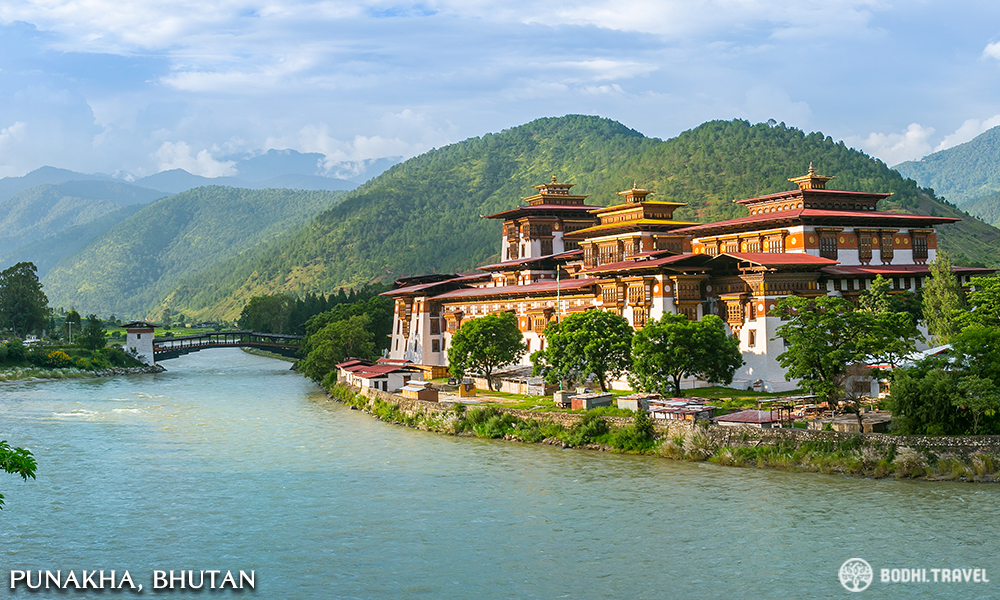
On day three of the tour, I visited the beautiful Punakha Dzong with its majestic temples and statues inside. Located along the fork of two rivers, Punakha Dzong was, to me, probably the prettiest structure in Bhutan. In fact, I was so enthused about the building that I went back a second time for that perfect photo-shot.
Another beautiful location during the trip was Dochula Pass which I passed by twice en route to Haa Valley and back. The Pass is a high point with unobstructed view of the Himalayan mountain range with the snow-capped mountains. It was rather cold so I did not spend too much time outside and went into the cafeteria there. Seated inside the cafeteria, I ate biscuits and sipped hot coffee while peering out of the glass windows to gaze at the Himalayan mountains.
Located at Dochulas Pass are 108 chortens dedicated to Bhutanese soldiers who died for their country in 2003. Chortens are Tibetan for stupas.
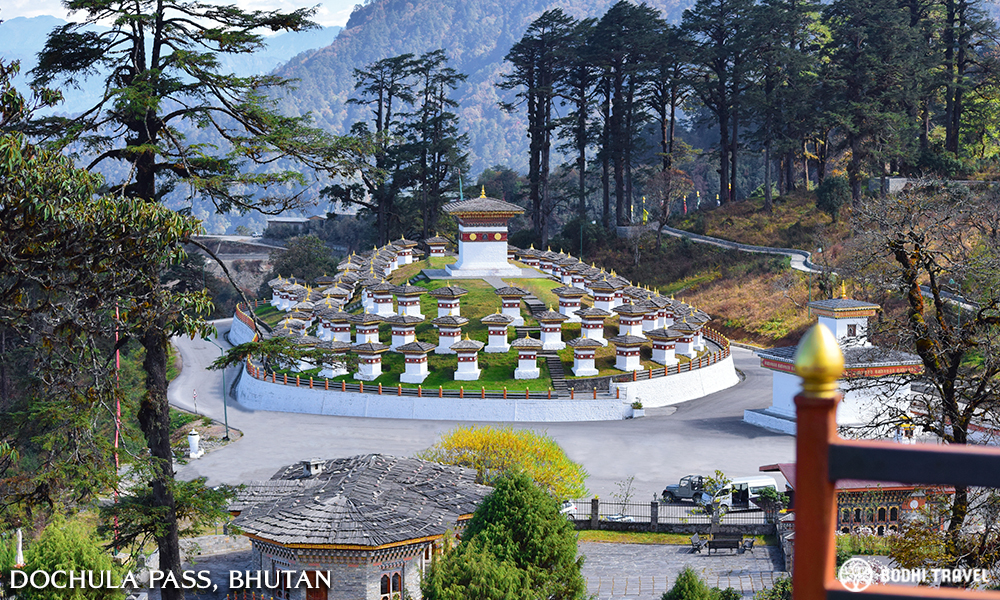
The last day of the trip was the highly anticipated trek to Taktsang Monastery – Tiger’s Nest Monastery – Taktsang is said to be the most spiritual place in Bhutan. The famous monastery was constructed, perched precariously 900m on a cliff above ground, around the cave where the Guru Rinpoche first meditated.
Padmasambhava (or Lotus Born), also known as Guru Rinpoche, was born in the eighth century and regarded to have brought Vajrayana Buddhism to Tibet.
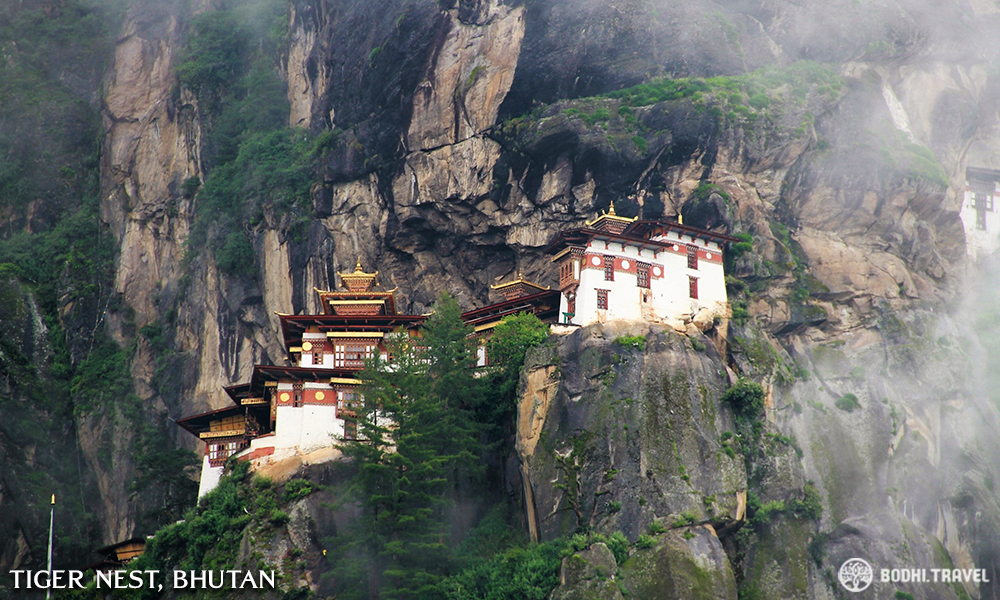
It was pretty cold in the morning and I was all bundled up with a scarf and skullcap. My guide offered me two bottles of water and I took one and politely declined the other (thinking that I would not need so much water in this cold weather). I could see, from the side of my eyes, her quietly stuffed the bottle into her backpack. So we set off.
What happened was hilarious – on hindsight - and humbling.
Within minutes, I took off my scarf and after 15 minutes, I was panting heavily. The thin mountain air had finally got to me. For the entire week, I was chauffeured from point to point and with an steep elevation gain, the trek was wearing me down. Soon I was perspiring badly with the skullcap and scarf tucked into my backpack.
I lost track of time but after what seemed like an eternity, we reached the first quarter mark of the trek. My guide suggested that I took a rest and I gratefully agreed. After about 10 minutes rest, we continued on the gruelling (to me) trek. After more than an hour, we reached the halfway point where the Takstang Cafeteria resided. Here we took a longer rest and I made friends with a number of inquisitive cats.
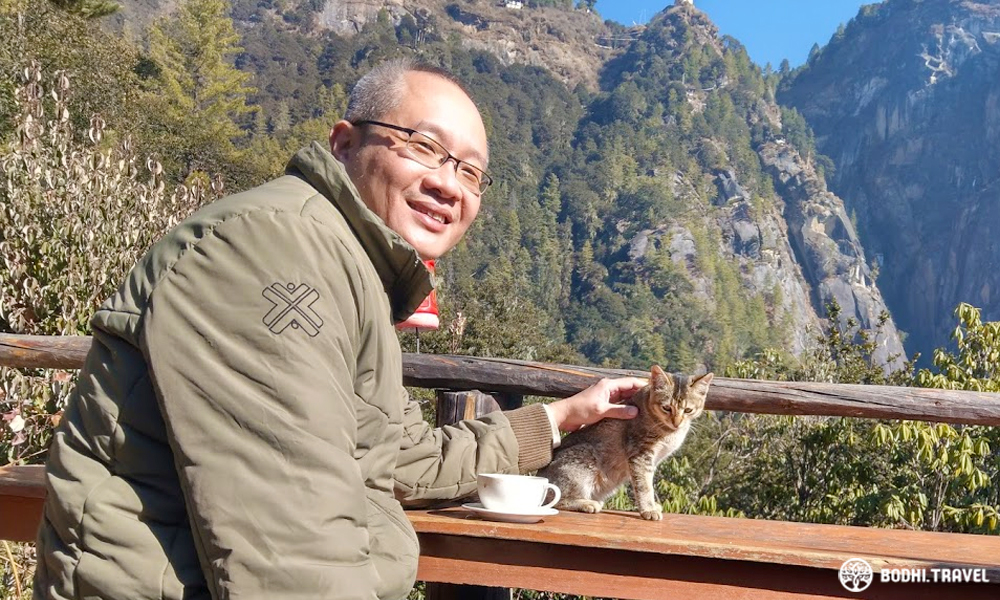
After about 30 minutes’ rest, I felt strong enough to continue. After walking about five minutes, I burst out laughing and my guide was curious. I told her that I felt as if I had not taken any rest. Nonetheless, there was no turning back and I ploughed on (and yes, I was grateful that my guide was holding on to a second bottle of water for me). The second half of the trek was more scenic with better view so it was definitely more enjoyable.
In the end, with much huffing and puffing, it took me 2 hours and 40 minutes to reach the Tiger’s Nest Monastery. The majestic monastery is a complex structure of various temples and monasteries. With advice from my guide, I visited all the temples and paid my respects to the Buddhas and Bodhisattvas statues inside. It must have taken me about an hour to visit all the places of worship. Interestingly, I saw Chinese Mahayana statues inside some temples - not a lot but it was an interesting contrast to the traditional Vajrayana design. My guide told me that those were placed by foreign devotees.
A year later, I met Shantum Seth and he told me that he took more than six hours making the round trip to the Tiger’s Nest Monastery. Every step was an exercise in mindfulness for him and he did not feel tired during the ascent.
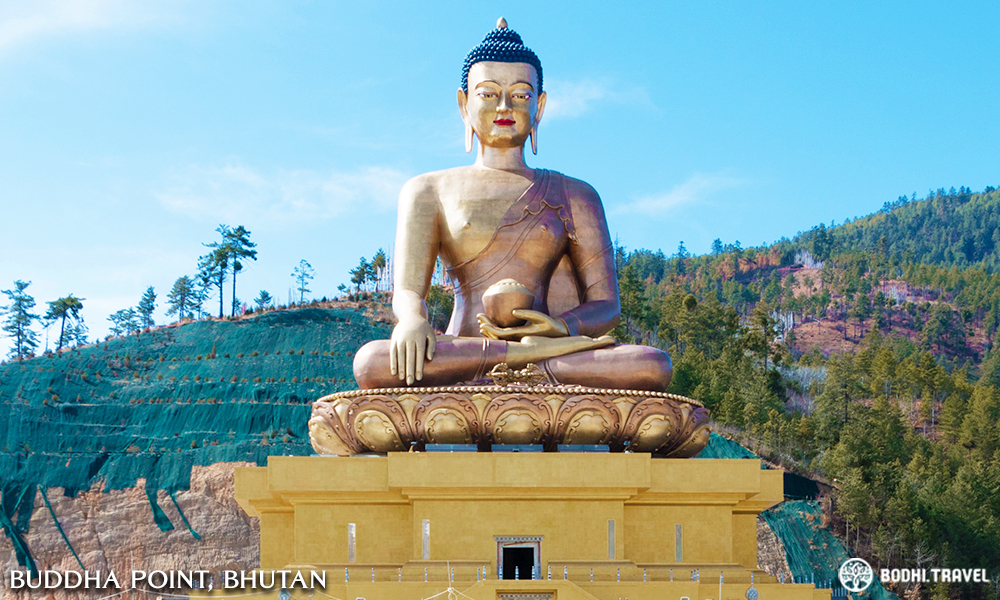
Epilogue
It has been more than a year since I visited Bhutan; I am scheduled to be back in Bhutan soon for a work trip. I had to check my notes to rekindle my memory of that place. There are many other places which I visited that I did not share in this article.
My fondest memory of the trip was actually not any of the sights indicated above. It was a stop that I made on way to Paro on the fifth day of the trip. I had always been a fan of river sounds (and bamboo groves). While on the road to Paro, I asked my guide to stop for a while along the river so that I could sit and enjoy listening to the rush of the river. That half hour stop was peaceful and beautiful with the cool wind and sunny sky.
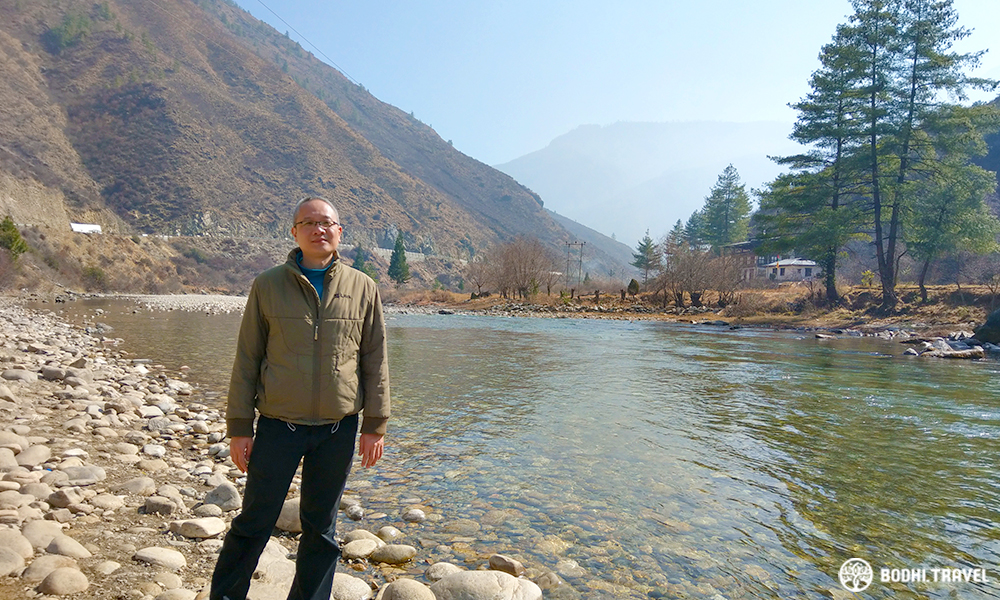
My memory of the stop by the river is an apt description of my trip to Bhutan. Peace and tranquility can be found anywhere in this charming Himalayan kingdom with her warm and welcoming people. It will be a challenge for them to embrace modernity while retaining all the charms that I enjoyed. I hope they will find a way and share their findings with the world.
Visit Happy Bhutan with us! Check out our tour packages for more details: [CLICK HERE]
MORE ARTICLE: Journey to Discover Thai Buddhism
MORE ARTICLE: In the Footsteps of the Buddha




